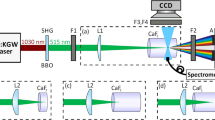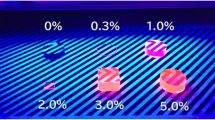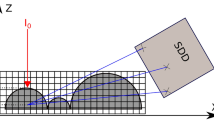Abstract
USING several clear specimens of calcite, the scattered spectrum has been photographed in each case under specially favourable conditions of illumination with a Littrow quartz spectrograph and a cooled mercury arc. Besides the Raman frequencies that may be attributed to one or other of the usual exciting radiations, three new lines at 2838 A., 2883 A. and 2905 A. have been recorded in nearly all the specimens, though there appear to be slight variations in intensity from specimen to specimen. All our attempts to detect these radiations in the source itself have been unsuccessful and they cannot be interpreted as Raman shifts. The first of these is strong and the other two are relatively weak. It is not possible to attribute them to any specific element; but it seems fairly clear that they are to be regarded as a sharp-line fluorescence spectrum, occasionally met with in crystals. As a check on their being attributable to calcite, the scattered spectrum of a large clear specimen of barytes was photographed under similar conditions; but the lines in question were not found.
This is a preview of subscription content, access via your institution
Access options
Subscribe to this journal
Receive 51 print issues and online access
$199.00 per year
only $3.90 per issue
Buy this article
- Purchase on SpringerLink
- Instant access to full article PDF
Prices may be subject to local taxes which are calculated during checkout
Similar content being viewed by others
References
Nature, 127, 626 (1931).
Nature, 128, 495 (1931).
Author information
Authors and Affiliations
Rights and permissions
About this article
Cite this article
BHAGAVANTAM, S., PURANIK, P. Fluorescence Lines in the Spectrum of Light Scattered by Calcite. Nature 169, 37 (1952). https://doi.org/10.1038/169037a0
Issue date:
DOI: https://doi.org/10.1038/169037a0



